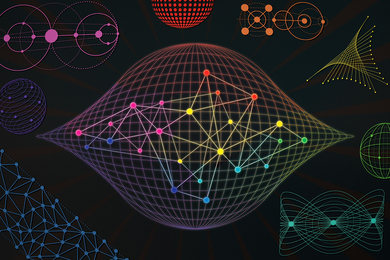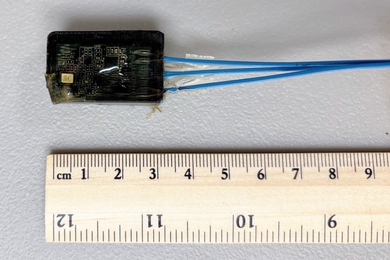You would think a young man who spent more than two hours each day in the rattling underground of a New York City subway, commuting from Brooklyn to City College and back, would never want to think about trains or trucks or traffic again.
But Joseph M. Sussman, JR East Professor (endowed by the East Japan Railway Co.) in MIT's civil and environmental engineering department and engineering systems division, has made the study and improvement of transportation systems his life's work.
In his new book, "Perspectives on Intelligent Transportation Systems," (Springer Science & Media Inc.) published this spring, Sussman shares his many years of leadership in research, teaching and government as well as his enthusiasm for his field. Sussman is clearly optimistic about the potential intelligent transportation systems (ITS) have for improving urban and regional traffic.
In "Perspectives," he explains, "ITS combines high technology and improvements in information systems, communication, sensors, and advanced mathematical methods with the conventional world of surface transportation infrastructure."
In commuters' terms, this means electronic toll collection systems (like Fast Lane and E-Z Pass), high-occupancy vehicle (HOV) lanes and higher-speed traffic lanes that charge higher fees. Sussman said that information technology adds efficiency to a regional traffic pattern by those means and by providing data on congestion to drivers inside their cars.
But for such systems to be effective, "We need to go beyond the technology and understand ITS on political, social, institutional, organizational and economic dimensions as well," he writes.
Based on Sussman's research and papers on ITS, "Perspectives" includes columns Sussman wrote for ITS Quarterly over a period of four years. All the essays are lucid and accessible to anyone who has thought about transportation and, as Sussman said, "Everyone is a transportation expert. We all use it every day and have ideas about how the system could provide better service."
His book offers local insights--into the workings of Boston's Central Artery/Tunnel project, for example, or the challenges New York City has faced since 9/11--as well as ITS views of such "mega-cities" in the fast-developing world as Beijing; Mexico City; and Bangkok, Thailand.
"The management of the developing-country mega-city is one of our most important urban transportation and environmental issues," Sussman writes. "ITS can help to deal with the problems those mega-cities face."
Sussman predicts "transitions" in transportation planning from urban to regional scale and from economic development to sustainable development, among many others.
"ITS is a hard sell for many transportation professionals. It means changing the way they do what they do, from building and maintaining highways to operating systems and managing and communicating information," he said.
In his book, Sussman portrays new ways for transportation professionals to teach, to learn and to practice. He notes many ways in which ITS education has changed, including taking on a more interdisciplinary focus. In 1993, he notes, only transportation students from MIT took his class. More recently, students have come from architecture, construction, public policy and urban planning fields. They are "seeing the excitement in transportation through ITS," he writes.
Sussman still sees the excitement. He has taught at MIT for 37 years and has been deeply involved in the Intelligent Transportation Systems program in the United States and abroad since 1988. In 2001, ITS Massachusetts established the Joseph M. Sussman Leadership Award in recognition of his contributions.
Sussman's office at MIT is full of personal and historical items, including tiny primitive sculptures and, no surprise, a picture of Brooklyn Dodgers baseball stars. A Red Sox fan, he describes himself as a "double-Yankees-hater--for what they did to my old Brooklyn Dodgers as well as the Sox (until 2004!)."
And no, Sussman did not have an electric train in his family's house, just blocks from Ebbets Field, home of the Dodgers. "I had an erector set. Building structures was my original motivation. Where would we put a train? We lived in an apartment."






